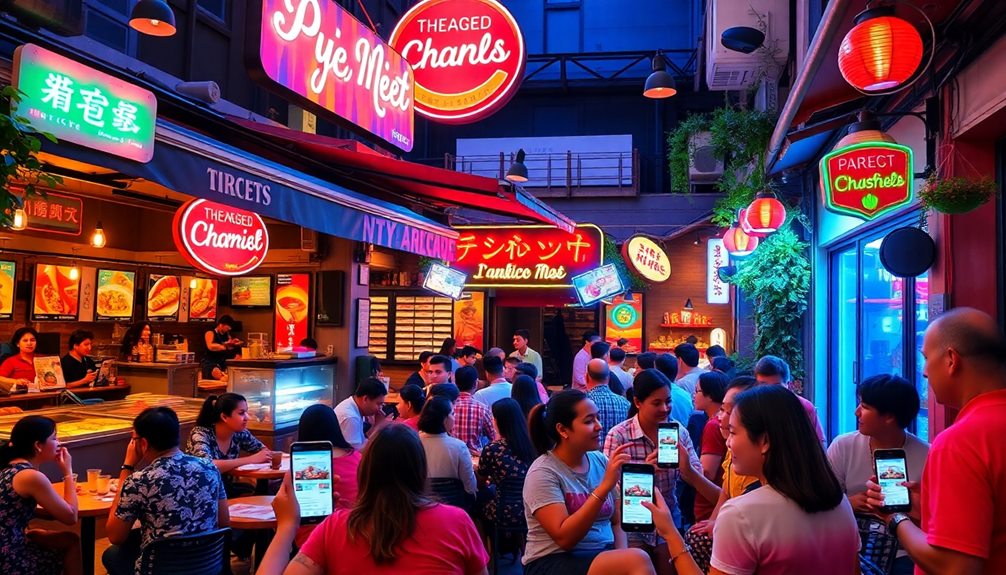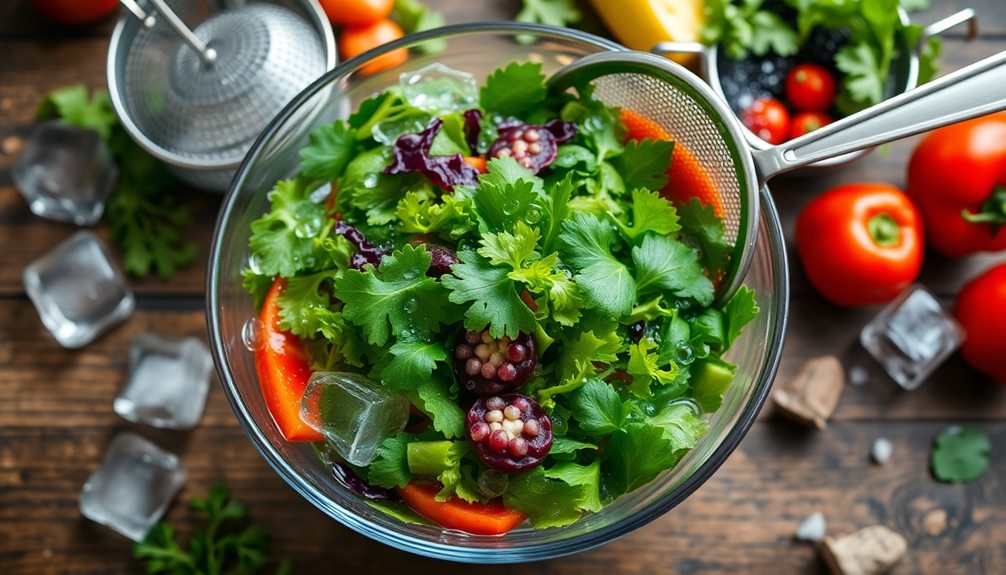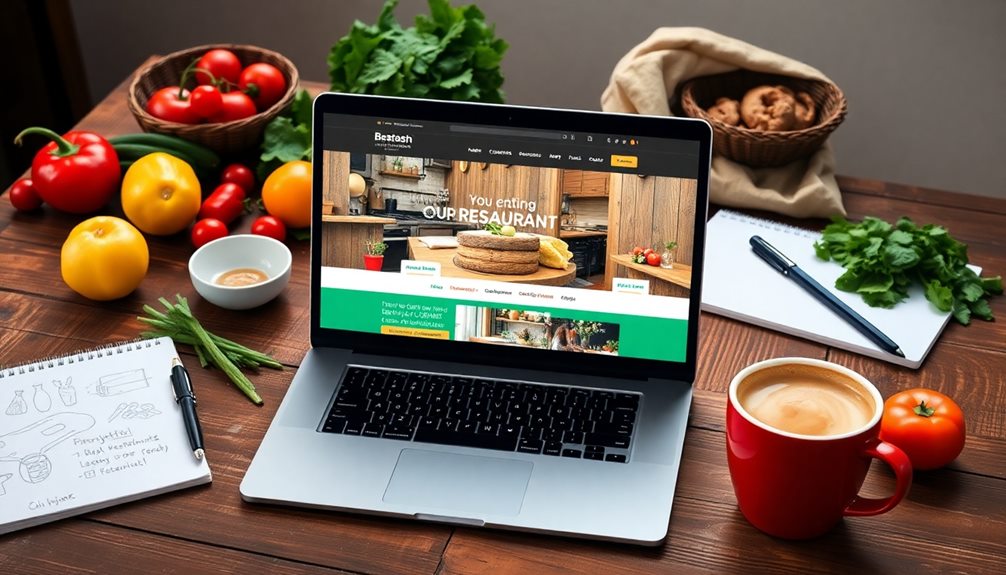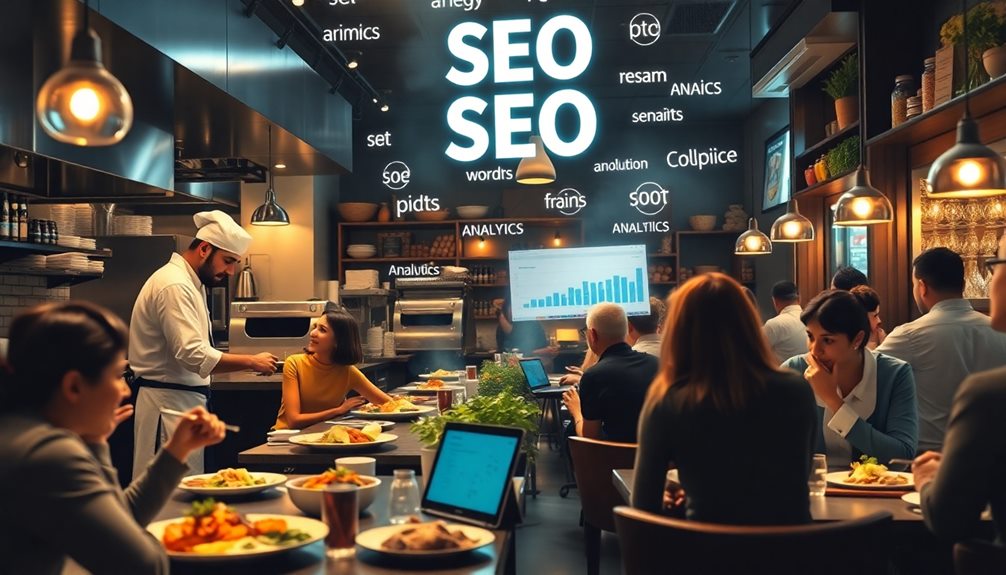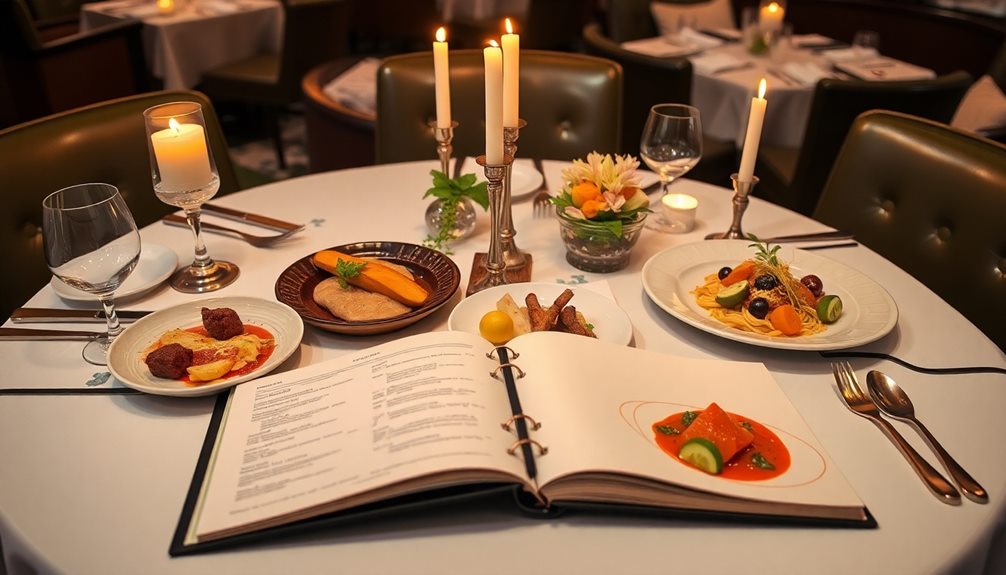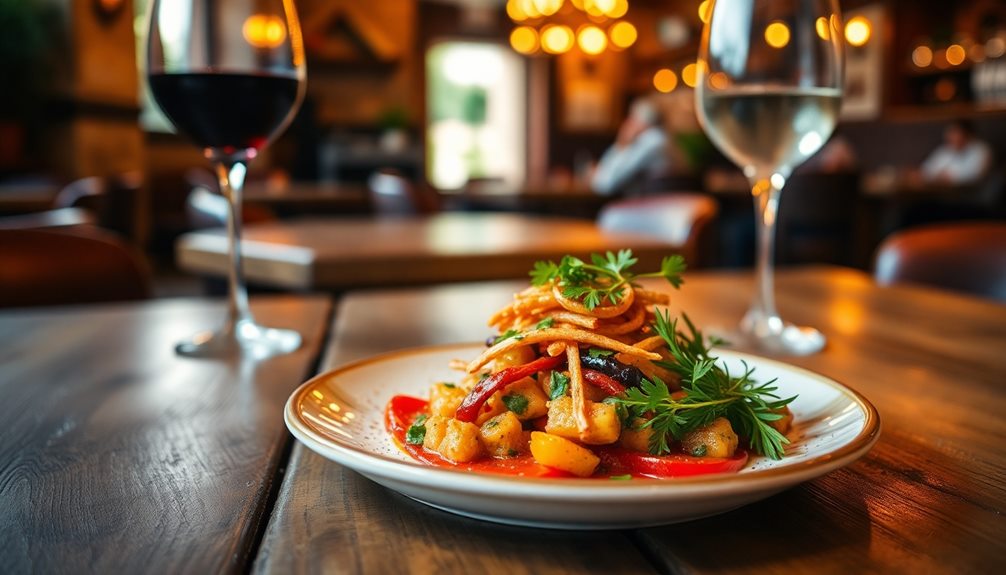To succeed in today's dining scene, you need effective restaurant advertising strategies. Start by establishing a strong brand identity that resonates with your target audience; it can greatly boost your revenue. A professional website is essential, as most diners research online before visiting. Social media marketing is important, especially for millennials and Gen Z who often discover new places there. Don't forget to optimize for local SEO so you appear in relevant searches. Finally, engage with customer feedback to show you value their input and build trust. There's much more to explore for successful advertising strategies.
Key Takeaways
- Develop a strong brand identity to differentiate your restaurant and create an emotional connection with customers.
- Build a professional website with essential pages and high-quality visuals to attract and inform potential diners.
- Leverage social media marketing by sharing engaging visual content and interacting with followers to increase brand awareness.
- Optimize for local SEO by ensuring accurate Google Business Profile and incorporating location-specific keywords for better visibility.
- Actively engage with customer feedback by responding to reviews and recognizing suggestions to enhance customer satisfaction and loyalty.
Establish Your Brand Identity
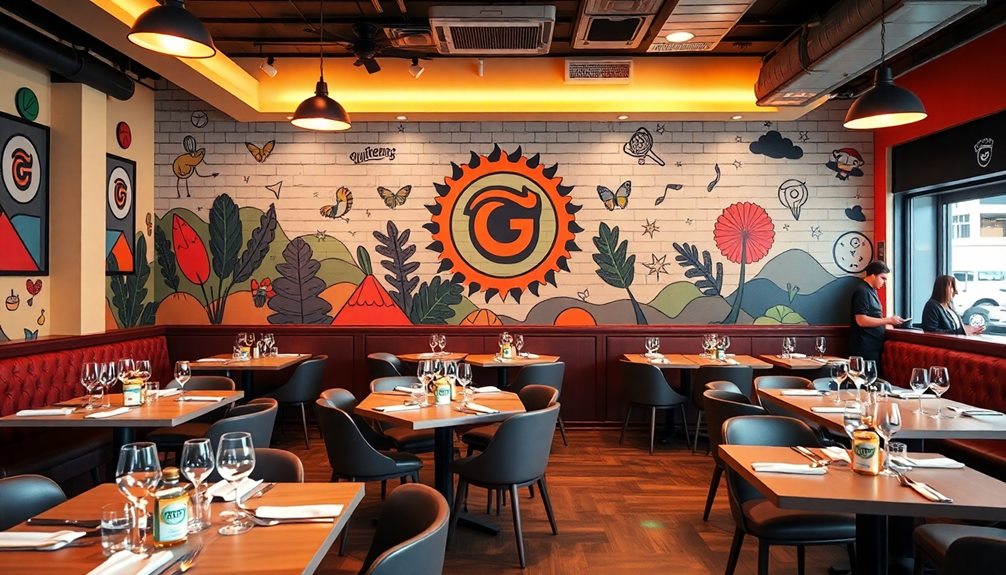
When you're looking to make your restaurant stand out, establishing a strong brand identity is essential. A well-defined brand identity not only differentiates you in a saturated market but also reflects your restaurant's mission, values, and target audience. By doing this, you enhance brand awareness and foster customer loyalty programs, leading to increased retention.
Understanding the importance of navigating life's tiny pitfalls can also apply to your business strategies, as small missteps in branding can lead to larger issues.
Consistent branding across all platforms—like your website and social media—boosts recognition and trust. In fact, studies show that consistent presentation can increase revenue by up to 23%.
To effectively reach your target demographic, you should create a cohesive theme and tone that resonates emotionally. Remember, 60% of consumers prefer brands that align with their personal values, so tapping into that emotional connection is vital.
Additionally, crafting a compelling brand story engages your customers and makes your restaurant memorable. Narratives are 22 times more memorable than mere facts, which means that sharing your unique story can encourage customers to spread the word about their experiences.
In short, invest in establishing your brand identity to create lasting impressions and cultivate a loyal customer base.
Build a Professional Website
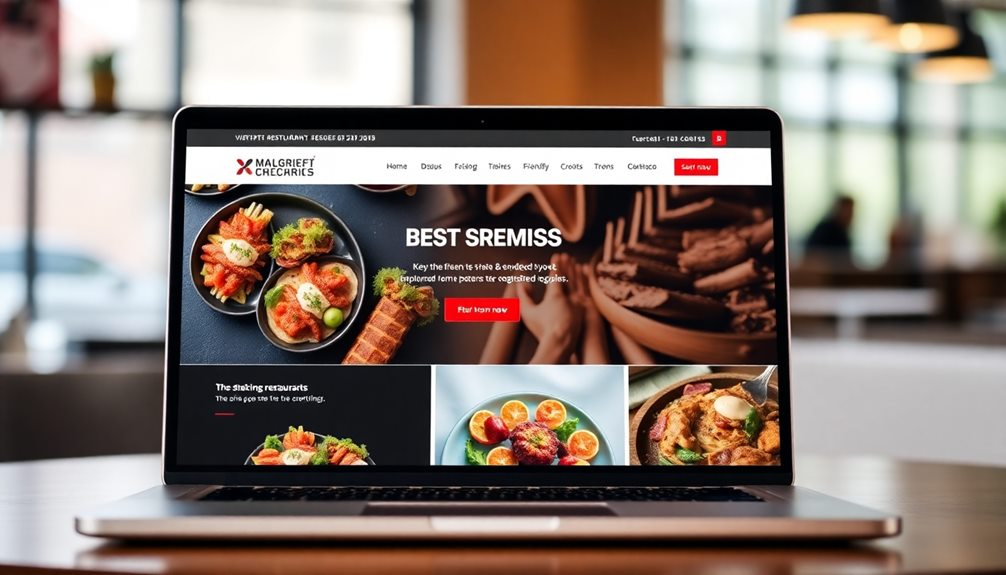
A strong brand identity sets the stage for your restaurant's online presence, making a professional website a key player in your marketing strategy. Your website should include essential pages like a homepage, about us, menu, and contact information to provide thorough information to potential diners.
Remember, 89% of consumers research restaurants online before dining, so ensuring your menu items are easy to find and read is critical.
A visually appealing site with high-quality visual content, including professional food photography, enhances customer engagement and sparks interest. This not only attracts new customers but also keeps them coming back.
Regularly updating your menu to reflect current offerings is necessary for maintaining accuracy and relevance, contributing to a positive customer experience.
A well-designed professional website serves as a primary information source for diners and establishes a polished first impression, important for attracting and retaining customers.
Integrating all these elements into your restaurant marketing plan will help you stand out in a competitive market and create lasting connections with your audience.
Don't underestimate the power of a professional website—it's a cornerstone of your restaurant's success.
Leverage Social Media Marketing
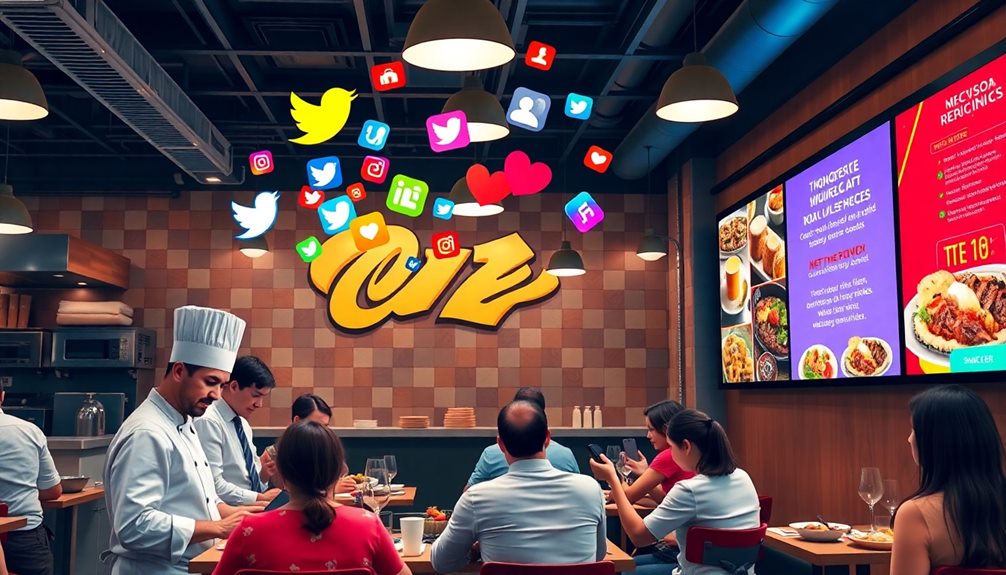
As you seek to attract more diners, leveraging social media marketing is essential in today's digital landscape. With 73% of millennials and Gen Z using platforms like Instagram and Facebook to discover new dining options, your restaurant can't afford to miss out. Engaging visual content, particularly food photography, can increase interaction rates by up to 120% on Instagram.
Consider these strategies:
| Strategy | Benefits | Examples |
|---|---|---|
| Visual Content | Attracts attention | High-quality food photos |
| User-Generated Content | Boosts authenticity | Customer photos and reviews |
| Targeted Ads | Cost-effective, high ROI | Promotions tailored to audiences |
| Community Engagement | Fosters customer loyalty | Hosting local events |
Regularly post updates about specials and promotions to keep your restaurant top-of-mind for followers. Engaging with customers through comments and shares enhances your online reputation and builds customer loyalty. By focusing on these social media marketing strategies, you'll effectively connect with your audience, driving foot traffic to your restaurant and creating a vibrant community around your brand.
Optimize for Local SEO
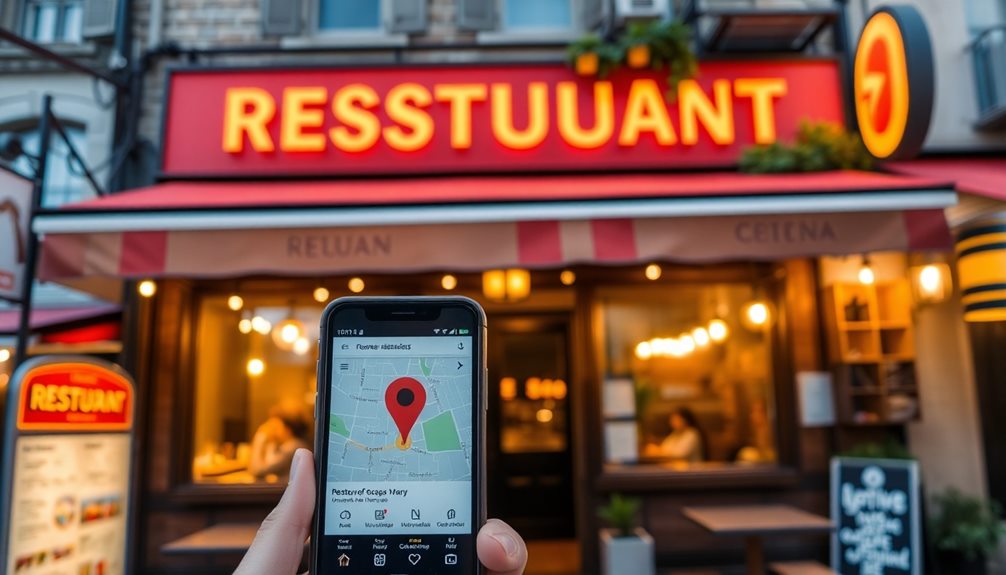
Optimizing for local SEO is crucial for attracting nearby diners who are searching for dining options in your area. Start by making sure your Google Business Profile is filled out with accurate NAP information, hours of operation, and high-quality photos.
With 89% of consumers researching restaurants online, a well-optimized profile can greatly boost your visibility in local search results. Additionally, utilizing natural language processing (NLP) can enhance customer interactions, leading to better engagement with potential diners.
Next, incorporate location-specific keywords throughout your website content and meta tags. This helps improve your rankings in local searches, making it easier for potential customers to find you.
Consistency is key; make certain your NAP information is uniform across all online directories to avoid confusing diners and hurting your local SEO.
Encouraging online reviews is another crucial aspect of restaurant marketing. Positive reviews not only build trust but also enhance your local search visibility.
Engage with these reviews to show you value customer feedback, which can positively influence your search engine rankings.
Engage With Customer Feedback
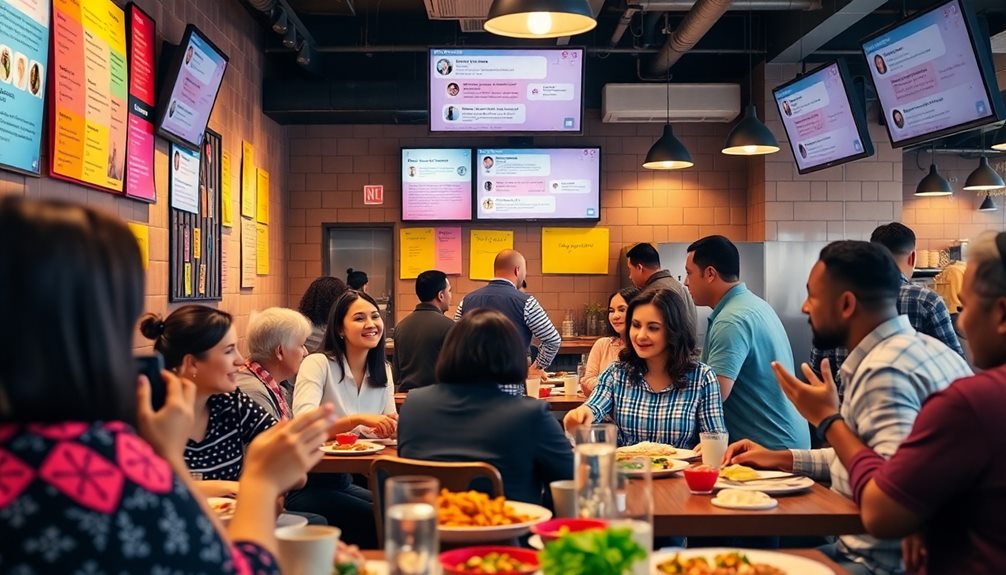
Engaging with customer feedback is a powerful way to enhance your restaurant's reputation and build loyalty. Actively encouraging customers to leave online reviews can greatly impact your restaurant's visibility; after all, 89% of consumers check reviews before deciding where to dine.
By taking the time to respond to online reviews, both positive and negative, you show your commitment to customer service, which 53% of customers expect within a week. This prompt engagement can lead to higher customer loyalty.
Incorporating customer feedback into service improvements can transform the dining experience, as 70% of patrons appreciate when their suggestions are recognized. You can also leverage positive testimonials in your marketing materials, which can draw in new customers—72% of people trust online reviews as much as personal recommendations.
Regularly monitoring online feedback not only helps manage your restaurant reputation but also provides insights for menu development and service enhancements. This approach increases customer satisfaction and retention.
Frequently Asked Questions
Which Strategy Is Best for a Restaurant?
Choosing the best strategy for your restaurant depends on your goals. Combine organic methods like SEO for lasting relationships with paid advertising for quick visibility, while engaging with your local community to boost foot traffic and credibility.
What Kind of Advertising Do Restaurants Use?
Restaurants use a buffet of advertising methods, from vibrant social media posts to targeted PPC campaigns. You'll find them engaging with local communities, managing online reputations, and crafting multi-channel strategies that draw customers like bees to honey.
How to Market Your Restaurant in 2024?
To market your restaurant in 2024, focus on enhancing your online presence, utilizing social media for engaging content, and implementing personalized email campaigns. Collaborate with local influencers and analyze customer data for better engagement.
How Do You Attract People's Attention in a Restaurant?
Did you know that posts with high-quality food images get 94% more engagement? To attract attention in your restaurant, use stunning visuals, eye-catching signage, and limited-time offers that create urgency and excitement.
Conclusion
Just like a chef carefully blends flavors to create the perfect dish, you need to mix these strategies to cook up your restaurant's success. Establishing your brand, crafting a stunning website, and engaging with customers are the secret ingredients. When you optimize for local SEO and harness the power of social media, you're seasoning your efforts for a delicious outcome. So, ignite your creativity, stir the pot, and watch your restaurant thrive as your patrons savor every bite.
